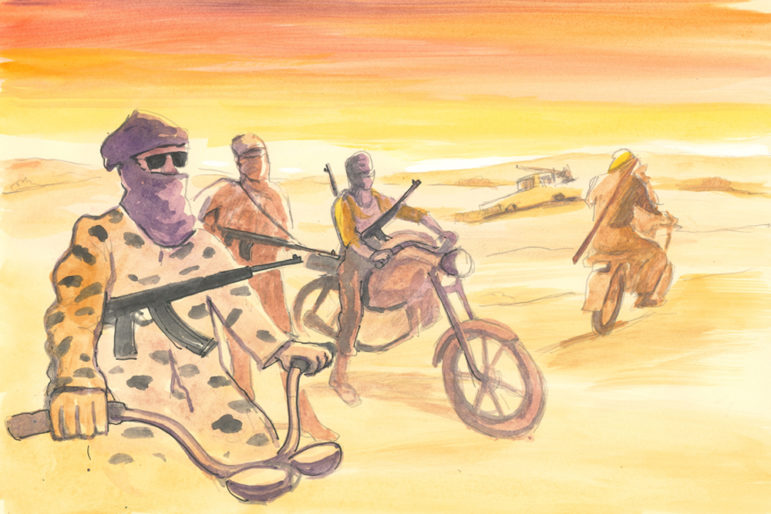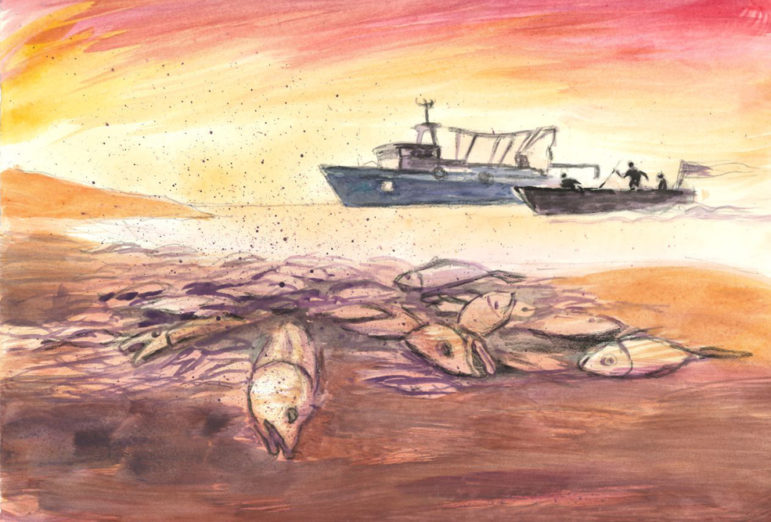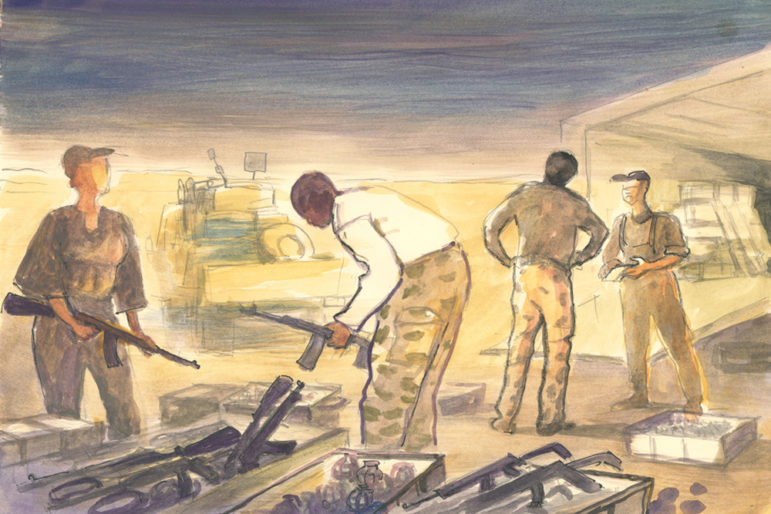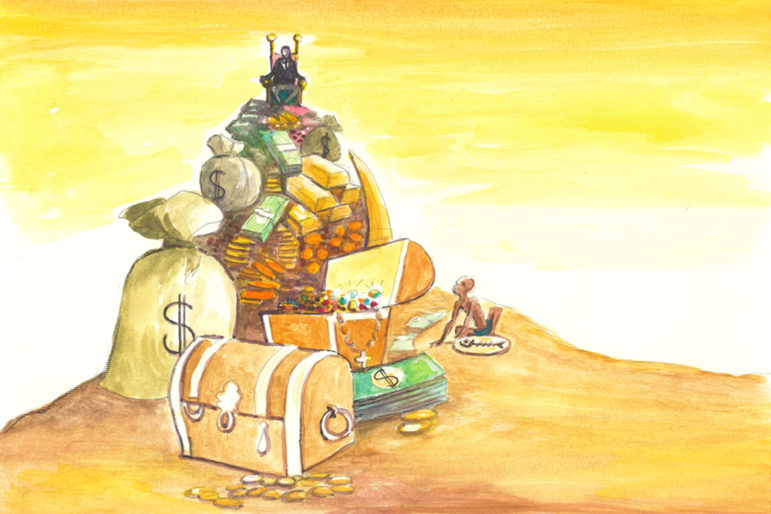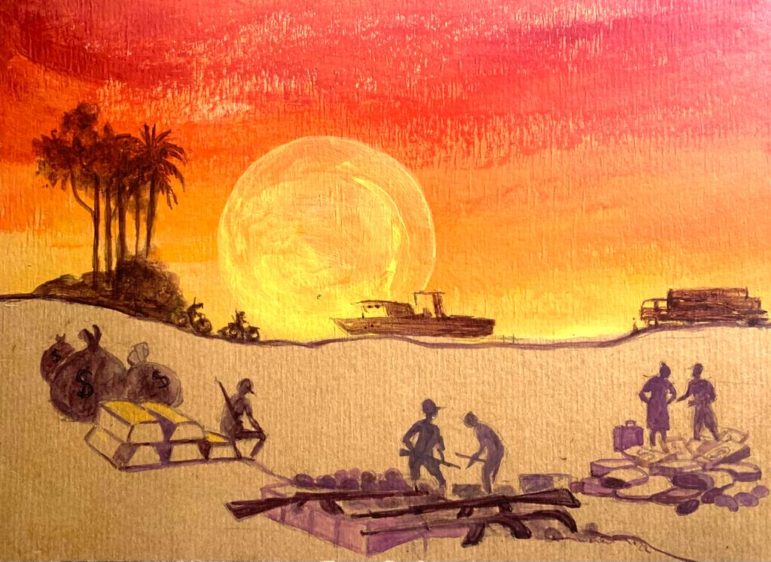

Illustration: Dominique Mwankumi pour GIJN
Guide to Investigating Organized Crime in Africa — Introduction
Read this article in
Guide Resource
Guide to Investigating Organized Crime in Africa
Chapter Guide Resource
Guide to Investigating Organized Crime in Africa — Introduction
Chapter Guide Resource
Guide to Investigating Organized Crime in Africa: Chapter 1 — Environmental Crimes
Chapter Guide Resource
Guide to Investigating Organized Crime in Africa: Chapter 2 — Terrorist and Militia Groups
Chapter Guide Resource
Guide to Investigating Organized Crime in Africa: Chapter 3 — Crimes on the Oceans
Chapter Guide Resource
Guide to Investigating Organized Crime in Africa: Chapter 4 — Arms Trafficking
Chapter Guide Resource
Guide to Investigating Organized Crime in Africa: Chapter 5 — Natural Resources Theft
Chapter Guide Resource
Guide to Investigating Organized Crime in Africa: Chapter 6 — Drug Trafficking
Chapter Guide Resource
Guide to Investigating Organized Crime in Africa: Chapter 7 — Financial Crimes
Chapter Guide Resource
Guide to Investigating Organized Crime in Africa: Chapter 8 — Kleptocracies
Chapter Guide Resource
Guide to Investigating Organized Crime in Africa: Chapter 9 — Other Crimes
In Mozambique, the discovery of large deposits of rubies and natural gas in 2017 was supposed to bring optimism to the cash-strapped country. Instead, it has only brought chaos. Years of corrupt officials looting resources, and of growing organized crime, have fed a radical Islamist insurgency, leading to increased instability, poverty, and human rights abuses.
In Africa, this is but one example of many. Terrorism has transformed some of the continent’s regions into what an African security expert described to the UN Security Council as “human slaughterhouses.” Organized crime, meanwhile, has unleashed an epidemic of illicit activity and turned public institutions into tools for the predation of public resources.
Organized crime is a global phenomenon. But Africa, with its deep-seated corruption and “resource curse,” is particularly hard hit. The continent is estimated to lose US$89 billion each year in illicit financial flows, according to the United Nations — nearly twice the amount of international aid money the continent receives. One result: The World Bank estimates that eight of the world’s top 10 countries with the greatest rates of inequality are African. This translates into elites who often become rich due to their connections with an array of illicit actors, including traffickers, smugglers, corrupt fixers, and brokers. All this looting and racketeering has left the majority of the population destitute and desperate — breeding grounds for militias and insurgencies. It is not a coincidence that Africa is now home to al-Qaida’s largest affiliated group, al-Shabab, while the Islamic State is also expanding its influence and territory.
As a result of these contributing factors, Africa now has the second highest levels of criminality in the world, behind only Asia, according to the Organized Crime Index. Resource theft, fraud and money laundering, human trafficking, wildlife poaching, drug smuggling, and other crimes cost African economies billions of dollars every year. The world’s powerful drug cartels in Latin America take advantage of Africa’s strategic position and weak rule of law to ship record amounts of narcotics to coastal Africa and then on to Europe. Simultaneously, trafficking networks lure young Africans into their human smuggling pipelines, where thousands perish each year in the Sahara or the Mediterranean.
We are faced with a phenomenon that shows no signs of slowing down. Indeed, it is corrupting the very institutions that are supposed to fight it. We at GIJN are firmly convinced that watchdog journalists have a critical role to play here — but only if they are well-equipped. This guide is therefore intended to help investigative journalists and other public watchdogs focus a spotlight on the various forms of organized crime that are devastating the continent. We’ve assembled nine chapters dedicated to techniques for investigating these distinct areas: environmental crime; financial crime; African kleptocracies; arms trafficking; resource looting; drug trafficking; armed groups; crimes at sea; and a round-up of other crimes that include human trafficking, migrant smuggling, cybercrime, counterfeiting, tobacco smuggling, and looting antiquities.
To write this guide, we’ve turned to an extraordinary group of veteran African journalists and regional experts who draw on their own reporting as well as those of other specialists across the continent. The guide is more of a survey and field manual than an encyclopedia. But we hope to expand this work in a broader, second edition.
A brief note on definitions. Finding a precise definition of organized crime can be challenging. For this guide, we are adopting the broad view used by the Africa Organised Crime Index: “Illegal activities, conducted by groups or networks acting in concert, by engaging in violence, corruption or related activities in order to obtain, directly or indirectly, a financial or material benefit. Such activities may be carried out both within a country and transnationally.”
With this definition, it is no exaggeration to say that organized crime today can be found across Africa, from local gangs to kleptocratic states. This gives us journalists enough material for a lifetime. The key is finding where to start, and what tools to use. As a step in that direction, we hope that this resource, the first of its kind dedicated to the continent, will be a reference for journalists everywhere to shine a light where it is most needed.
Guide to Investigating Organized Crime in Africa was produced by GIJN’s Maxime Koami Domegni and Aïssatou Fofana (project managers), and Nikolia Apostolou, David E. Kaplan, Reed Richardson, and Alexa van Sickle (editors). Dominique Mwankumi provided the illustrations. Smaranda Tolosano coordinated the translations. Special thanks to the rest of the GIJN staff, who helped in so many ways. For more on the individual chapters and their authors, see the Table of Contents below.
This guide was possible due to the invaluable support of the Global Initiative Against Transnational Organized Crime (GITOC), an independent civil society organization dedicated to seeking new and innovative strategies and responses to organized crime.
Additional Resources
GIJN Guide to Investigating Organized Crime
GIJN Webinar: Investigating Organized Crime in Sub-Saharan Africa
The Rise of African Environmental Investigative Journalism
In 2022 GIJN held a webinar on investigating organized crime in Sub-Saharan Africa. You can watch the full webinar here:
 Maxime Koami Domegni is GIJN’s Francophone Africa Editor and an award-winning investigative journalist. He has worked as editor-in-chief of the Togolese newspaper L’Alternative and, based in Dakar, Senegal, for BBC Africa as a journalist and planning producer for French-speaking Africa.
Maxime Koami Domegni is GIJN’s Francophone Africa Editor and an award-winning investigative journalist. He has worked as editor-in-chief of the Togolese newspaper L’Alternative and, based in Dakar, Senegal, for BBC Africa as a journalist and planning producer for French-speaking Africa.


